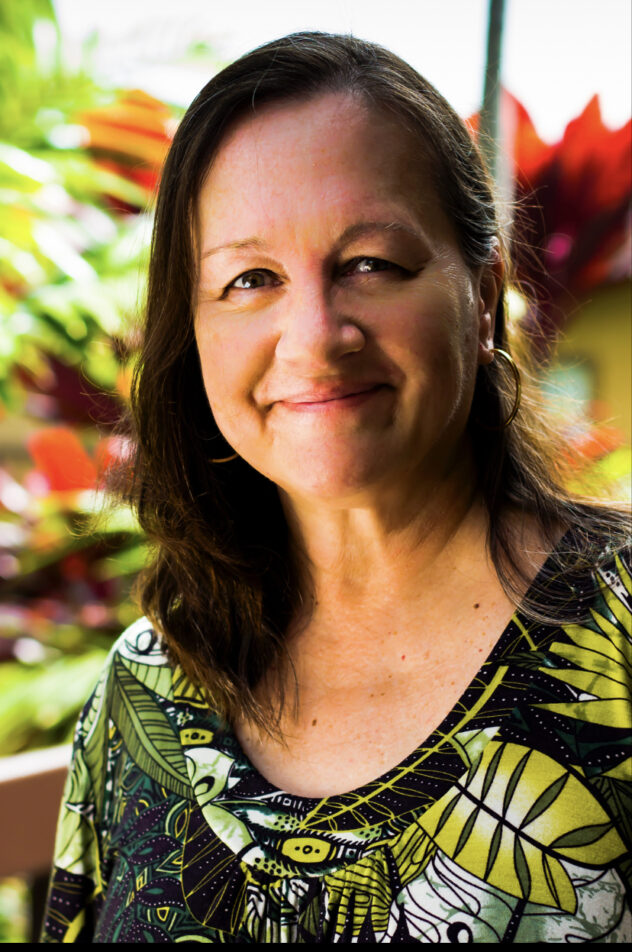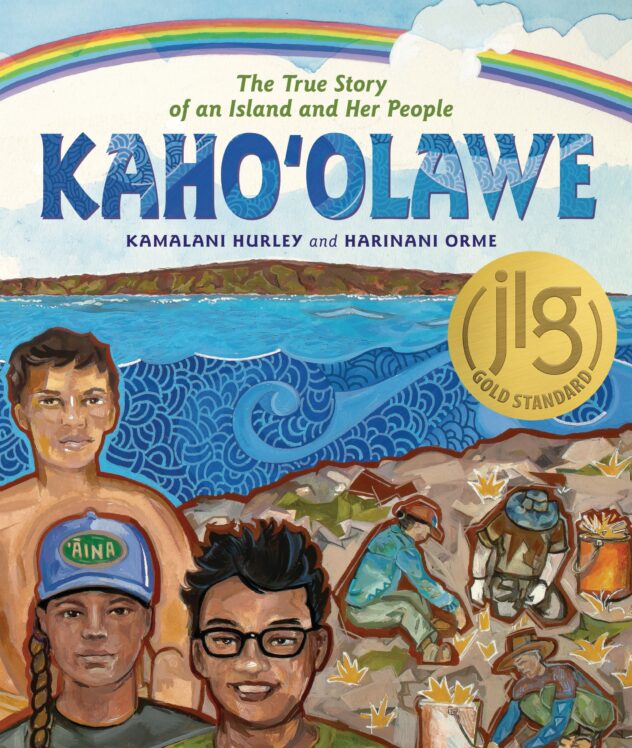Here is PII with my conversation with Kamalani Hurley. Check out the first post where she described her book on the history of Kaho’olawe. It’s something I didn’t even know and never learned in school despite being born and raised in Hawaii. In this second post, I learned even more. You’ll see that Kamalani is a wealth of information and you can tell she’s a natural teacher by heart. I am so grateful and honored to share her story and wisdom with you.

Anything you wished you knew before you started writing for children?
Not that I wished I knew but that I wish I could’ve done. I wish I could’ve starting my writing career sooner. I had to make a living – raise a family, pay a mortgage, all those adulting things – and so that’s what I did for most of my adult life. I spent 38 years teaching college business writing and linguistics, and while I truly loved my students and colleagues, I wish I could’ve started writing my own projects sooner. But then again, at my *ahem* mature age, I like to think I have life experiences that make my writing richer and more grounded in history.
What has been the hardest part of this journey?
The hardest part has been the wait! It has been two and a half years from the time the book was acquired to its release on in Spring 2024. When I began the journey, I had no idea picture books needed so much time. I know now that much of the reason for the time is because picture books are illustrated. And I am so grateful to have a fellow Native Hawaiian, the amazing Harinani Orme, as the illustrator. She is truly an artistic genius, and she has been a joy to work with.
Any tips for those who want to write like you?
Write like me? LOL Well, here’s a bit of advice for anyone who wants to write stories.
- Read anything, read everything. Reading will introduce you to story ideas, points of view, and language.
- Take classes, especially from writers you want to emulate. Classes and webinars by the Writing Barn and the Highlights Foundation teach important skills as well as tested tips and tricks.
- Find your people. Join the Society for Children’s Writers and Illustrators. Look for critique groups for feedback and support.
- Follow your passion. Sometimes people say “write what you know,” but I interpret that to mean “write what you care about.” You know, what you’re passionate about.
- Above all, know that writing, like anything important you want to do, takes time, practice, and effort. If you want to become a writer, keep at it. Not everyone will like your work, and that’s fine. But believe you have a voice and a story to tell and don’t allow yourself to be discouraged.
What other books are you working on?
Because I love writing about my native community, I am working on a not-yet-announced middle grade nonfiction book, Unforgotten, about the bubonic plague of 1899 and the fires of 1900 of Honolulu’s Chinatown. People are always surprised to learn (1) that the ship, the Nippon Maru, that brought the plague to Honolulu in the summer of 1899 is the same ship that carried the plague to San Francisco, (2) that Honolulu’s Chinatown of 1899-1900 was a lot bigger than the 15 or so blocks it is now, (3) that not solely adults lived there but so did lots of kids both immigrant and Hawaii-born, and (4) that the name “Chinatown” is a bit of a misnomer since Honolulu’s was nearly 50% Native Hawaiian, depending on the source. Indeed, my great-great-grandparents lived nearby in Leleo and in Kukui-Pālama, where I grew up, and so I have much aloha for the area.
In addition, I wrote two Moana 2 movie extension stories. One will be included in the 5-Minute Princess Stories collection scheduled for January 2026.
Writing those books were so much fun – I got to live in Moanaʻs world for a little bit – and working with editors Katlin and Elizabeth was a terrific experience.
Finally, I have a nonfiction picture book manuscript out on sub about hula that I’m hopeful about, and I’m working on a couple of other projects, too. I’m just following my passion!
We spoke last time in this blog post about local authors and Native Hawaiian authors. We still are a ways away from proliferating the shelves with indigenous and native authors, but there is so much enthusiasm and excitement in this much needed space. I think a sense of community is so important. What can readers do to find out more about you and support other native authors?
Yes, we still have a long way to go for stories told in authentic indigenous voices. But I am encouraged to see that more titles by Pacific Islander and Native Hawaiians, including Malia Maunakea, Char Tuiasoa, Gabby Ahuliʻi, and Tammy Paikai, and Kealani Netane. Kealani’s bookstagram, Little Pasifika Readers, has become the go-to for readers eager to learn more about indigenous creators from our island communities. I invite your readers to visit my website, kamalanihurley.com, where I blog about native authors, artists and filmmakers.

Finally, when does your book come out and where can we get a copy of it!
I am so pleased that the scheduled for release on February 4, 2025, and that the book is available now for pre-orders at Amazon, Barnes and Noble, Bookshop.org, and other online booksellers.
Mahalo nui loa, Brandi!
Thank you so much Kamalani! I am so proud, inspired and encouraged by everything you have accomplished. I am so happy to be sharing your book and can’t wait to read it myself.
![]()

One comment on “Part II of My Conversation with Native Hawaiian Author Kamalani Hurley”
Comments are closed.